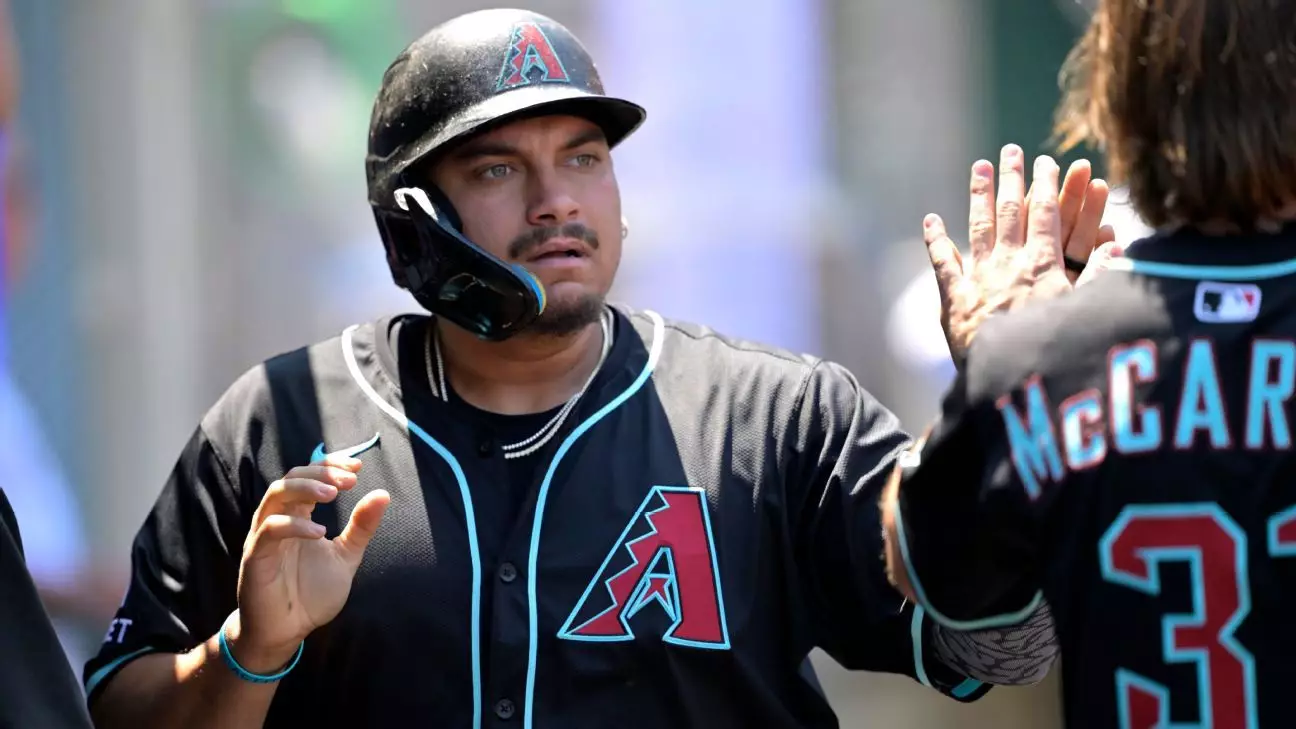Major League Baseball’s trade season ignited with a palpable sense of ambition, as teams lock in on postseason pursuits and long-term growth. The recent deal involving the Seattle Mariners and Arizona Diamondbacks exemplifies this strategic dynamism. By acquiring first baseman Josh Naylor, the Mariners showcase their unwavering desire to contend, while the Diamondbacks reveal an openness to rebuilding and retooling for the future. Such transactions are not merely about swapping players; they are a statement about where teams see themselves heading and how they value short-term success against long-term sustainability.
Seattle’s decision to bolster its roster with Naylor highlights a clear intent to maximize their window of opportunity. As they sit in a potent position—a mere half-game behind the AL wild-card spot—they understand that closing the gap requires impactful additions. Naylor’s reputation as a power-hitter with a low strikeout rate underscores the Mariners’ focus on consistency and offensive reliability. His ability to perform in high-pressure moments and his versatility, having played designated hitter, make him a valuable asset as Seattle aims to deepen its offensive firepower. The Mariners consciously avoided overextending their prospect assets, balancing immediate needs with a farm system world-renowned for depth and promise. By acquiring seasoned talent like Naylor, Seattle signals their commitment to leveraging existing strengths while leaving future flexibility intact.
In stark contrast, the Diamondbacks are navigating a different strategic path. With a core roster featuring explosive talents like Corbin Carroll and Ketel Marte, Arizona finds itself at a crossroads—willing to trade veteran players such as Naylor and possibly others to accelerate its rebuild. The Diamondbacks’ openness reflects a pragmatic approach, recognizing that their current standing—just under .500 at 50-53—necessitates movement. Injuries to key pitchers like Burnes and Montgomery have exposed vulnerabilities, prompting Arizona to seek pitching prospects and draft capital to shore up their rotation. They seem poised for a deliberate rebuild, betting that bolstering their farm system now will pay dividends in future seasons.
Player Value and Organizational Philosophy
Josh Naylor’s profile is emblematic of the modern baseball slugger who combines power with patience and plate discipline. His low strikeout rate paired with consistent offensive production makes him a coveted commodity, especially among contending teams eager for reliable run production. Naylor’s ability to contribute at both first base and designated hitter positions offers strategic flexibility. Moreover, his on-field emotional displays highlight a player who cares deeply about winning—a trait that can energize a clubhouse during critical stages of a playoff push.
From Arizona’s perspective, trading Naylor is a calculated financial and tactical decision. The return—prospects Brandyn Garcia and Ashton Izzi—reflects a desire for projected future impact rather than immediate reinforcement. Garcia’s recent debut reveals a high-upside arm equipped with a fast sinker and breaking ball that could develop into a key bullpen or rotation piece. Izzi, a young hurler with a strong track record in the minors, continues to develop his control and pitch repertoire. Both prospects symbolize Arizona’s focus on building a sustainable contender versus plugging gaps in the short term.
Seattle’s choice not to heavily leverage their upper-tier prospects signals a different organizational philosophy. Their farm system, considered among the best in baseball, provides the luxury of selective trading and strategic resource management. Despite being only marginally ahead in the standings, they recognize the value of patience and measured risk-taking. By acquiring a proven producer in Naylor, they improve their odds of edging into postseason play without sacrificing their future core—an approach rooted in confidence and a belief in their development system.
Implications for the Future of MLB Power Dynamics
This trade reflects a broader shift in how teams are approaching the deadline—balancing short-term competitiveness with long-term stability. The Mariners’ proactive stance exemplifies a win-now mentality rooted in confidence and a well-constructed roster. Conversely, the Diamondbacks demonstrate that patience and strategic asset accumulation can still be a viable path, especially when contending teams seek to replenish their rotation amidst injuries and free agency concerns.
The broader implications extend beyond these two teams. MLB’s competitive landscape continues to see a spectrum of philosophies—from aggressive, win-now gambles to patient rebuilds. Success will hinge on each franchise’s ability to accurately assess their roster’s strengths, weaknesses, and the market’s nuances. Teams like Seattle show that possessing a deep farm system and making judicious moves can yield playoff appearances, even when standings are tight. Meanwhile, Arizona underscores that in a league where pitching injuries and free agent turnover are inevitable, flexibility and strategic patience can be pivotal.
Ultimately, these moves are about more than just individual players—they are indicative of evolving paradigms in team construction and season management. As the trade deadline approaches, fans and analysts alike will watch closely to see who executes with precision and who misses opportunities. The coming weeks could redefine the power structure of the league, with the Mariners aiming to solidify their status as contenders and the Diamondbacks positioning themselves for a potential future resurgence. Only time will tell who made the smarter gamble, but one thing is clear: this period of strategic maneuvering will shape the future narrative of Major League Baseball’s competitive hierarchy.

